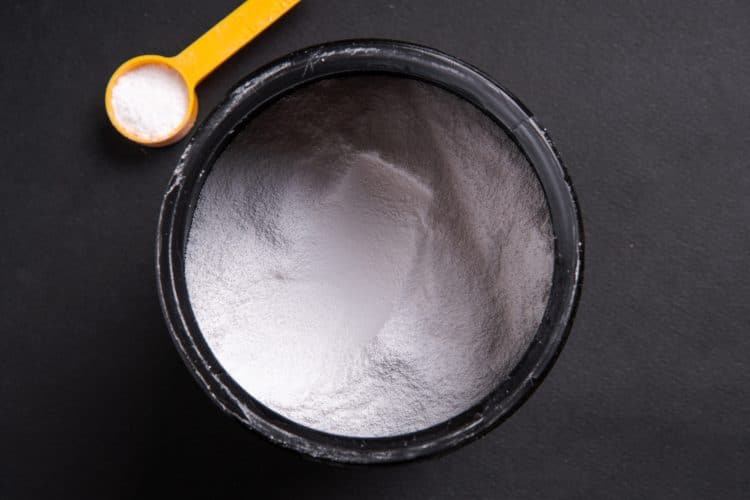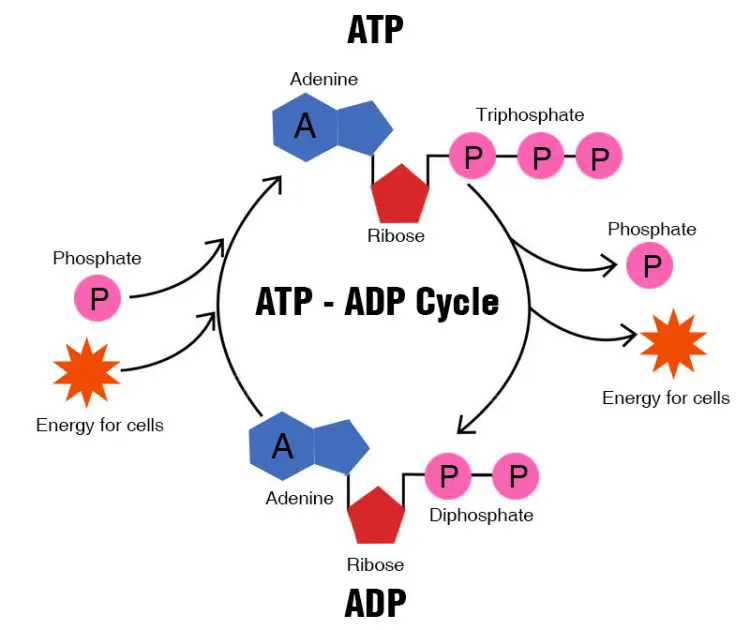The body produces creatine naturally, which is used as an alternate energy source during high-intensity exercise to sustain effort. Ninety-five percent of creatine is stored in our muscles, while the remaining five percent is stored in the brain.
Creatine is one of the most well-researched sports nutrition supplements. Taking this supplement regularly can increase baseline creatine levels by 30 percent, which can help maximize strength and muscle gains. (1)
I have been using creatine for over 15 years and can vouch for its effectiveness. In this article, I take you over how daily creatine supplementation can impact hypertrophy and how to maximize its effectiveness.
Benefits of Taking Creatine Supplements Daily
Here are the advantages of adding this supp to your stack:
- Muscle Fiber Hypertrophy: Creatine enhances your work capacity, allowing you to do more in each workout, ultimately boosting hypertrophy.
- Enhanced Performance: Creatine improves muscle contractions, helping you perform more reps with heavier weights. It also boosts sprinting and other HIIT performance.
- Faster Recovery: Supplemental creatine boosts intra-workout recovery. It gives your muscles more fuel to power through intense workouts.
- Reduced Fatigue: Creatine can delay the onset of fatigue, enabling you to go harder and for longer before your muscles start giving out.
Next Read: Creatine + Whey Synergy: The Science Behind This Power Duo’s Muscle-Building Magic
Level Up Your Fitness: Join our 💪 strong community in Fitness Volt Newsletter. Get daily inspiration, expert-backed workouts, nutrition tips, the latest in strength sports, and the support you need to reach your goals. Subscribe for free!
Creatine’s Impact on Muscle Fiber Types
Although creatine is found in real foods like red meat, poultry, milk, and some fish, the quantities are often too small to produce any significant benefits.
Building muscle and strength is a complex process and involves multiple aspects.
On the exercise front, you must train close to two to three reps in reserve (RIR) in each set while progressively increasing the training volume and intensity. You must follow it with a well-balanced diet and recovery plan for optimal growth.
Next Read: Fitness Coach Jeff Cavaliere Says Using Light Weights and High Volume Is The Key To Building Muscle
Creatine & Different Muscle Fibers
Now, let’s dive into the details and explore creatine’s impact on different types of muscle fibers:
- Type I: Slow-twitch muscle fibers excel in extended activities that require endurance. For example, long-distance running or cycling.
- Type IIa: Fast-twitch oxidative fibers are the most versatile type of fibers that can handle both endurance and short bursts of power.
- Type IIx: Fast-twitch glycolytic fibers optimize the speed and explosive power required in activities like heavy lifting or sprinting. The sad news is that these muscle fibers tire quickly.
Creatine works by powering the type II fibers. Hence, if you are an endurance athlete looking to boost your performance, you will have very little to gain from creatine supplementation.
Other Physiological Changes Associated With Creatine Supplements
Creatine can also influence your muscle-building journey in these two ways:
Increases Cell Volumization
Creatine draws water into the muscle cells, making them look fuller and rounder. It can also trigger anabolic responses, which can promote muscle growth.
Water retention in the muscles can make them stretch, which signals to your body that it’s time to build new muscle tissue to accommodate the increased volume. It also boosts the nutrient supply to these muscles.
Sporadic creatine consumption and low water intake can make these gains vanish.
Some people experience a water weight gain of up to 3 pounds (1.4 kilograms) within the first few weeks of taking a creatine supplement.
Promote Protein Synthesis
You break muscle tissue during strength training sessions. Your body must synthesize new proteins to build stronger and bigger muscles. One of the most promising things about creatine is that it promotes muscle protein synthesis. (4)
Creatine can also supercharge your recovery by lowering muscle inflammation. Chronic inflammation can hinder your progress and increase injury risk. (5)
Folks dealing with a lackluster recovery can consider adding a creatine supplement to their stack. However, those dealing with existing health issues should get their doctor’s clearance before doing so.
Creatine’s Influence on Energy Systems
Creatine’s biggest impact is on the body’s energy system. Understanding how that works can help enhance your performance and results.
Below are the three primary energy systems your body relies on to fuel muscle contractions:
ATP-PCr System
Adenosine triphosphate (ATP) acts as the primary energy currency for cells. It powers your hard, intense training sessions that require maximal output in a short period. It is the fastest way to generate energy, but your body’s ATP reserves are very limited and can be exhausted within 10 seconds of starting an explosive activity.
Creatine supercharges the ATP-PCr system and boosts the amount of phosphocreatine (PCr) stored in the muscles. (3) This leads to greater muscle stimulation and growth in the long term.
Level Up Your Fitness: Join our 💪 strong community in Fitness Volt Newsletter. Get daily inspiration, expert-backed workouts, nutrition tips, the latest in strength sports, and the support you need to reach your goals. Subscribe for free!
Glycolytic System
The glycolytic reserves are limited and can last up to a couple of minutes. Your body breaks down glucose to produce energy under this system.
Creatine supplements increase the time you spend in the ATP-PCr and glycolytic systems, which can make all the difference in HIIT workouts or sports.
Oxidative System
The oxidative system is the last to kick in and is mainly dedicated to endurance tasks. This is the slowest energy source but can power you for several hours. The oxidative system uses oxygen to break down fats and carbs for fuel.
Now Read: Exercise Scientist Discusses If Creatine Can Cause Undesirable Side Effects
How To Use Creatine Supplements For Best Results
Experts believe that you must maximize your muscle creatine levels to experience its positive effects. There are two popular ways of doing this:
Loading Phase
Take 20 grams of protein daily for five to seven days to achieve muscle creatine saturation. You must split the creatine dosages into five-gram servings throughout the day. Following this, you must switch to the maintenance phase, which involves consuming three to five grams per day.
Maintenance Phase
You can skip the loading phase and begin by taking three to five grams of creatine daily. It will take you around four weeks to maximize your muscle creatine stores via this approach.
Research shows no benefits of creatine cycling (beginning with the loading phase and then switching to maintenance). (2)
Also Check Out: The Forgotten Vitamin: Unlock Your Fitness Potential with This Essential Nutrient
Creatine Dosage and Safety Considerations

Creatine is one of the most studied supplements and is considered safe for consumption by healthy individuals.
That said, there are a few known mild side effects associated with creatine, such as water retention, bloating, or stomach discomfort.
Science-backed fitness content creator Jeremy Ethier suggests splitting your creatine intake into multiple doses throughout the day. Avoid taking it on an empty stomach or with caffeine, and mixing it with hot water to lower the risk of stomach discomfort and other issues.
These complexities are usually temporary and subside as your body gets used to this compound.
Check Out: The Creatine Paradox: Does This Muscle Builder Really Make You Gain Weight?
How To Prevent Creatine Side Effects
Beginners should start slow and opt for the maintenance dose of three to five grams a day until their body adapts to creatine.
Water is your best friend when supplementing with creatine. Drink at least a gallon of water daily to avoid dehydration and bloating. It will also help promote cell volumization.
Each individual reacts to creatine uniquely due to several factors, including genetics, lifestyle, and creatine consumption patterns.
You must learn to listen to your body and pay close attention to how your body responds to creatine. Cut creatine intake if you experience any significant problems, and consult with your doctor.
Creatine Dosage
The ideal creatine dosage for muscle gain will vary for each individual, depending on which cycling protocol they prefer.
Anywhere between three (maintenance phase) to 20 grams (loading phase) is acceptable. You must adjust your dosage based on your body’s response.
Remember, creatine is just one aspect of building a bigger and stronger physique. A balanced and personalized training, diet, and recovery program are vital for maximizing your muscle-building potential.
For example, I consume creatine daily right after brushing my teeth in the morning. This routine ensures that I don’t skip creatine on days when I’m not training.
Like any other supplement, creatine is not a magic pill. You must consume the optimal dose regularly for optimal results.
Conclusion
Creatine can help boost endurance, strength, and hypertrophy gains, which makes it a go-to supplement for many fitness enthusiasts. This versatile compound optimizes multiple physiological processes involved in muscle growth and recovery.
Consuming a creatine supplement every day will give your body the tools it needs to build a bigger, stronger, and more resilient physique.
If you have any questions about the benefits of adding creatine to your fitness routine, drop them in the comments below, and I’ll be happy to help!
References:
- Kreider RB, Kalman DS, Antonio J, et al. International Society of Sports Nutrition position stand: safety and efficacy of creatine supplementation in exercise, sport, and medicine. J Int Soc Sports Nutr. 2017;14:18. Published 2017 Jun 13. doi:10.1186/s12970-017-0173-z
- Barranco-Gil, D., Alejo, L. B., Revuelta, C., Górriz, M., Pagola, I., Ozcoidi, L. M., Lucia, A., & Valenzuela, P. L. (2024). High-dose short-term creatine supplementation without beneficial effects in professional cyclists: a randomized controlled trial. Journal of the International Society of Sports Nutrition, 21(1), 2340574. https://doi.org/10.1080/15502783.2024.2340574
- Clark JF. Creatine and phosphocreatine: a review of their use in exercise and sport. J Athl Train. 1997;32(1):45-51.
- Ingwall JS, Weiner CD, Morales MF, Davis E, Stockdale FE. Specificity of creatine in the control of muscle protein synthesis. J Cell Biol. 1974;62(1):145-151. doi:10.1083/jcb.62.1.145
- Bredahl EC, Eckerson JM, Tracy SM, McDonald TL, Drescher KM. The Role of Creatine in the Development and Activation of Immune Responses. Nutrients. 2021;13(3):751. Published 2021 Feb 26. doi:10.3390/nu13030751
- Vega, J., & Huidobro E, J. P. (2019). Efectos en la función renal de la suplementación de creatina con fines deportivos [Effects of creatine supplementation on renal function]. Revista medica de Chile, 147(5), 628–633. https://doi.org/10.4067/S0034-98872019000500628











